TVB-Cloud
VirtualBrainCloud will develop and validate a decision support system that provides access to high quality multi-disciplinary data for clinical practice. The result will be a cloud-based brain simulation platform to support personalized diagnostics and treatments in NDD.
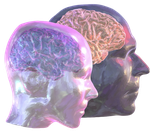
Project Description and Collaboration with HBP
The annual worldwide cost of Alzheimer’s dementia was 777.81 billion Euro in 2015. This number will rise to 7.41 trillion Euro in 2050. Early diagnosis would save up to $7.9 trillion in medical and care costs by 2050 in the US alone. However, the emergent pathology is highly variable across people, necehighly variable across people, necessitating individualized diagnostics and interventions. The VirtualBrainCloud addresses this by bridging the gap between computational neuroscience and subcellular systems biology, integrating both research streams into a unifying computational model that supports personalized diagnostics and treatments in NDD. The VirtualBrainCloud not only integrates existing software tools, it also merges the efforts of two big EU initiatives, namely The Virtual Brain large scale simulation platform of the EU Flagship Human Brain Project and IMI Alzheimer Research platform and in particular the AETIONOMY project.
Objectives
VirtualBrainCloud will develop and validate a decision support system that provides access to high quality multi-disciplinary data for clinical practice. The result will be a cloud-based brain simulation platform to support personalized diagnostics and treatments in NDD. The EU PRACE (Partnership for Advanced Computing in Europe) initiative, will provide the required computing infrastructure. The VirtualBrainCloud will develop robust solutions for legal and ethical matters by interacting with EU projects such as European Open Science Cloud (EOSC), ‘cloud4health’, Alzheimer’s Europe patient organizations and ELIXIR, an organization that manages and safeguards EU research data. Our software developers have already produced highly successful brain simulation and clinical decision support tools. The resulting software will be a cloud based computational modeling system that is tailored to the individual, and bridges multiple scales to identify key mechanisms that predict NDD progression and serves as Precision Decision Support System.
Partnering Organisations





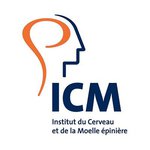







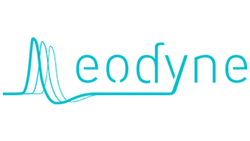

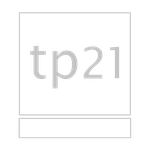
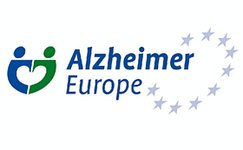
Joint publications
- N. A. Akar et. al. Arbor – a morphologically-detailed neural network simulation library for contemporary high-performance computing architectures. arXiv e-prints, art. arXiv:1901.07454, Jan. 2019. https://arxiv.org/abs/1901.07454.S.
- Anandhi Iyappan Michaela Gündel Mohammad Shahid Jiali Wang Hui Li Heinz-Theodor Mevissen Bernd Müller Juliane Fluck Viktor Jirsa Lia Domide Erfan Younesi Martin Hofmann-Apitius. Toward a Pathway Inventory of the Human Brain for Modeling Disease Mechanisms Underlying Neurodegeneration. Journal of Alzheimer's disease
- Blundell et. al. Code Generation in Computational Neuroscience: A Review of Tools and Techniques. Frontiers in Neuroinformatics, 12:68, 2018. ISSN 1662-5196. doi:10.3389/fninf.2018.00068.
- Canuet L, Pusil S, López ME, Bajo R, Pineda-Pardo JÁ, Cuesta P, Gálvez G, Gaztelu JM, Lourido D, García-Ribas G, Maestú F. “Network Disruption and Cerebrospinal Fluid Amyloid-Beta and Phospho-Tau Levels in Mild Cognitive Impairment.” J Neurosci. 2015 Jul 15;35(28):10325-30.
- Fluck, Senger, Ziegler, Claus, Schwichtenberg. The cloud4health Project: Secondary Use of Clinical Data with Secure Cloud-Based Text Mining Services 2017 In: Griebel M., Schüller A., Schweitzer M. (eds) Scientific Computing and Algorithms in Industrial Simulations. Springer, Cham https://doi.org/10.1007/978-3-319-62458-7_15
- Koval, Bone, Lois, Bottani, Marcoux, Samper-Gonzalez, Burgos, Charlier, Bertrand, Epelbaum, Colliot, Allassonniere, Durrleman for the Alzheimer’s Disease Neuroimaging Innitiative. Simulating Alzheimer’s disease progression with personalised digital brain models (preprint) https://who.rocq.inria.fr/Stanley.Durrleman/papers/DigitalBrainModels.pdf
- López ME, Bruna R, Aurtenetxe S, Pineda-Pardo JA, Marcos A, Arrazola J, Reinoso AI, Montejo P, Bajo R, Maestú F. “Alpha-band hypersynchronization in progressive mild cognitive impairment: a magnetoencephalography study.” J Neurosci. 2014 Oct 29;34(44):14551-9.
- Maestú F, Peña JM, Garcés P, González S, Bajo R, Bagic A, Cuesta P, Funke M, Mäkelä JP, Menasalvas E, Nakamura A, Parkkonen L, López ME, Del Pozo F, Sudre G, Zamrini E, Pekkonen E, Henson RN, Becker JT; Magnetoencephalography International Consortium of Alzheimer's Disease. A multicenter study of the early detection of synaptic dysfunction in Mild Cognitive Impairment using Magnetoencephalography-derived functional connectivity. Neuroimage Clin. 2015 Aug 1;9:103-9. doi: 10.1016/j.nicl.2015.07.011. eCollection 2015.
- Matzke, Schirner, Vollbrecht, Rothmeier, Llarena, Rojas, Triebkorn, Domide, Mersmann, Solodkin, Jirsa, McIntosh, Ritter. TVB-EduPack—An Interactive Learning and Scripting Platform for The Virtual Brain. Frontiers in Neuroinformatics
- Nakamura A, Cuesta P, Fernández A, Arahata Y, Iwata K, Kuratsubo I, Bundo M, Hattori H, Sakurai T, Fukuda K, Washimi Y, Endo H, Takeda A, Diers K, Bajo R, Maestú F, Ito K, Kato T. “Electromagnetic signatures of the preclinical and prodromal stages of Alzheimer's disease.” Brain. 2018 May 1;141(5):1470-1485.
- Nakamura A, Cuesta P, Kato T, Arahata Y, Iwata K, Yamagishi M, Kuratsubo I, Kato K, Bundo M, Diers K, Fernández A, Maestú F, Ito K. Early functional network alterations in asymptomatic elders at risk for Alzheimer's disease.Sci Rep. 2017 Jul 26;7(1):6517. doi: 10.1038/s41598-017-06876-8.
- Nowke et. al. Toward rigorous parameterization of under constrained neural network models through interactive visualization and steering of connectivity generation. Frontiers in Neuroinformatics, 12:32, 2018. ISSN 1662-5196. doi:10.3389/fninf.2018.00032
- J. Oehrl et. al. Streaming live neuronal simulation data into visualization and analysis. In R. Yokota, M. Weiland, J. Shalf, and S. Alam, editors, High Performance Computing, pages 258–272, Cham, 2018. Springer International Publishing. ISBN 978-3-030-02465-9. doi:10.1007/978-3-030-02465-9_18.
- Poldrack, Feingold, Frank, Gleeson, de Hollander, Huys, Love, Markiewitcz, Moran, Ritter, Turner, Yarkoni, Zhang, Cohen. The importance of standards for sharing of computational models and data https://psyarxiv.com/q3rnx
- Sanz Leon, Knock, Woodman, Domide, Mersmann, Mcintosh, Jirsa. The Virtual Brain: a simulator of primate brain network dynamics. Frontiers in Neuroinformatics
- Schirner, McIntosh, Jirsa, Deco, Ritter (2018) Inferring multi-scale neural mechanisms with brain network modelling. eLife https://doi.org/10.7554/eLife.28927.001 Video tutorial: https://www.youtube.com/watch?v=rAyAiQ83B9U&list=PLVtblERyzDeIATvaoHp-bBtksF25zm8p1&index=7
- Schirner, M., S. Rothmeier, V. Jirsa, A. R. McIntosh and Ritter, P. (2015). An automated pipeline for constructing personalised virtual brains from multimodal neuroimaging data. Neuroimage. doi: 10.1016/j.neuroimage.2015.03.055. Video tutorial: https://www.youtube.com/watch?v=j7r8WZ5ls64&list=PLVtblERyzDeIATvaoHp-bBtksF25zm8p1&index=6
- Shen K, Bezgin G, Schirner M, Ritter P, Everling S, McIntosh AR (2019) A macaque connectome for large-scale network simulations in TheVirtualBrain Nature Scientific https://doi.org/10.1038/s41597-019-0129-z
- Solodkin, Zimmermann, McIntosh, Stefanovski, Ritter (2017) Neurological biomarkers and Neuroinformatics: The role of The Virtual Brain. Book: in Molecular-Genetic and Statistical Techniques for Behavioral and Neural Research https://doi.org/10.1016/B978-0-12-804078-2.00001-5
- Stefanovski, Triebkorn, Spiegler, Diaz-Cortes, Solodkin, Jirsa, McIntosh, Ritter; for the Alzheimer’s Disease Neuroimaging Initiative (2019). Linking molecular pathways and large-scale computational modeling to assess candidate disease mechanisms and pharmacodynamics in Alzheimer’s disease. Frontiers Computational Neuroscience doi: 10.3389/fncom.2019.00054
- Susi G, de Frutos Lucas J, Niso G, Ye Chen SM, Anton Toro L, Chino Vilca BN, and Maestu F. Healthy and pathological neurocognitive aging: Spectral and functional connectivity analyses using magnetoencephalography. In OXFORD RESEARCH ENCYCLOPEDIA OF PSYCHOLOGY AND AGING. Oxford University press, 2018.
- Woodman, Pezard, Domide, Knock, Sanz-Leon, Mersmann, Mcintosh, Jirsa. Integrating neuroinformatics tools in TheVirtualBrain. Frontiers in Neuroinformatics
- Zimmermann, Perry, Breakspear, Schirner, Sachdev, Wen, Kochan, Mapstone, Ritter, McIntosh, Solodkin (2018) Differentiation of Alzheimer’s disease based on local and global parameters in personalized Virtual Brain models. Neuroimage Clinical https://doi.org/10.1016/j.nicl.2018.04.017
- Ritter, P., M. Schirner, A. R. McIntosh and V. K. Jirsa (2013). "The virtual brain integrates computational modeling and multimodal neuroimaging." Brain Connect 3(2): 121-145.
Key facts
Time frame: 2018 to 2022
Origin: Spontaneous Application
Funding:
European Commission, H2020-EU.3.1.5.3.
Project Website VirtualBrainCloud
News:




